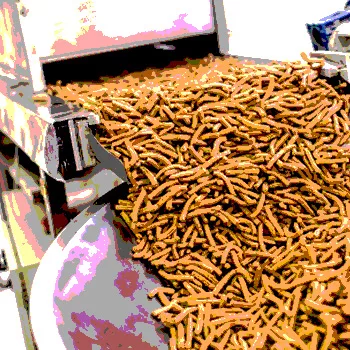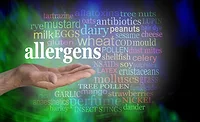Controlling Allergens in Food Manufacturing Plants

Pop quiz time: What’s the number one reason for food safety recalls in the U.S.? Poor packaging? The presence of harmful pathogens? Think again. According to the U.S. Department of Agriculture Food Safety and Inspection Services, undeclared allergens were the leading cause of recalls in 2012, totaling 29 out of 82 recalls in the year.[1] Indeed, food allergies have long been recognized as a medical issue with prevalence, especially in children, increasing over time.[2, 3] The U.S. Centers for Disease Control and Prevention National Center for Health Statistics reported that from 1997 to 2007, there was an 18 percent growth of children younger than 18 with food allergies. By 2007, 3.9 percent of the American population of children under 18 (an estimated 3 million children) had a reported food allergy.[4] With the uptick in cases of food allergies, especially in such a sensitive population, food companies must pay even closer attention to their allergen-control programs.
Such recalls are an obvious public health concern, but beyond that they are also a significant economic issue. In 2012, the amount of food recalled due to undeclared allergens totaled 475,358 pounds.[1] According to a study by the Food Marketing Institute, the average cost of a recall to a food company can add up to $10 million in direct costs. These costs typically include notification, product retrieval, storage, destruction, unsalable product, root cause investigation and additional labor costs associated with these activities.[5] Depending on the size of the brand or company, the costs may be even higher due to any litigation costs, costs from agreed or mandated governmental oversight post-incident, lost sales and the impact to the company’s market value and brand reputation.[5]
Because of the public health concern and the high cost of recalls, focus on controlling allergens in manufacturing plants is becoming a “hot” topic. Companies need an effective and affordable process to control allergens and to protect consumers while not limiting their food choices and, moreover, not using precautionary labeling on all food products. An integrated approach involving the entire product’s life-cycle management coupled with an assessment of residual allergens should aid in such a task.
Life-Cycle Management Benefits
Controlling allergens in a food plant involves a lot more than just checking for cleanliness of the processing lines after certain products containing allergens are handled. A company doing allergen control needs to assure that raw ingredients are coming from places that are also managing their allergens. They have to assure that the raw ingredients and finished product are stored appropriately, such as away from products that may contain allergens. Care should be taken not to store corn grains near wheat grains to avoid cross-contamination, for example. In addition, if a company is producing a gluten-free cereal in one line and a wheat cereal in another line, in a different room, it may still be necessary to manage the ventilation system of the plant so no dust from the wheat line is transferred to the gluten-free line.
Selecting the Right Allergen Testing Technology
There are several commercial options for assessments of residual allergens in the market; choosing which method to use requires some attention. Because allergens are protein molecules, the detection methods for these structures can focus on one of the following technologies: immunochemical methods, DNA-based methods, mass spectrometry and non-specific methods.
Immunochemical methods are more widely known as enzyme-linked immunosorbent assay (ELISA) methods or lateral flow; this technology has been around for decades and is fairly inexpensive. Eight types of food (milk, eggs, peanuts, tree nuts, fish, shellfish, soy, and wheat) account for over 90 percent of allergic reactions, and kits are available for all of the big eight food allergens with time-to-result varying from minutes for lateral flows and dipsticks to hours for ELISA plate assays. Drawbacks for this type of technology include the potential for cross-reactivity, lack of reference materials and, therefore, the need for in-house validation studies.
If one is looking for more specificity, DNA-based methods should be considered. This type of method uses PCR technology to detect DNA sequences indicative of allergenic species. DNA-based methods are extremely specific and are very useful to verify doubtful immunochemical test results. However, the price of equipment and the level of skill needed to perform this method are high, making this method difficult to justify for smaller plants. In addition, the absence of DNA does not always assure absence of the protein, thus adding complexity to how results are interpreted.
With sensitivity to very low levels of protein/peptides and specificity of protein composition and sequence information, mass spectrometry is one of the most powerful methods for allergen detection. The method requires skilled technicians to run extensive sample preparation prior to testing and also to interpret complex results. This requirement, along with the high price of equipment, makes this test a bad choice for routine analysis. However, methods like mass spectrometry can be very valuable tools for validation of simpler methods. Food processing plants in need of this level of allergen understanding in their operation can partner with contract labs that offer this detection technology to support their own in-house work.
Other options for allergen detection are non-specific methods that involve detection of proteins or ATP. Nonspecific methods based on ATP detection are inexpensive and rapid, with the ability to perform on site in real-time. ATP detection methods lack specificity and require a determination of background ATP levels in the plant prior to implementing testing, but can be great tools for on the spot pass/fail decisions. One, however, must be careful because ATP is present in all living cells and an environment clean of proteins can still have high ATP levels that are derived from other sources. Lastly, nonspecific methods can also be based on protein detection; non-specific protein detection methods are fast, inexpensive and can be great tools for assessing or validating cleaning procedures in plants. A negative result in this test means that the surface tested is free of all allergenic proteins. The lack of specificity in this case may become an advantage for companies looking for a “one test for all proteins” that is fast and easy to perform. Because of the test’s simplicity, in-house validation work for this method is recommended.
Ranging from fast to lengthy, cheap to expensive, specific to non-specific, there are many tools available to support allergen-testing plans in manufacturing plants. Although some methods are more common than others, choosing the right method for each processing plant will depend on factors like the type of food being produced, the food processing effects on the proteins, turn-around time, product label claims and, of course, cost. Choosing the right allergen detection method is not a decision to be made lightly; there are many resources available to help you make the best choice for your operation (FDA, 2005; Goodman, 2004; MDA, 2013). In summary, implementing an allergen control plan may be costly, but dealing with an undeclared allergen recall will certainly cost much more.
Camila Gadotti, M.S., is a field technical service professional with 3M Food Safety.
References
1. www.fsis.usda.gov/wps/portal/fsis/topics/recalls-and-public-health-alerts/recall-summaries
2. Sicherer, S. 2002. Food allergy. Lancet 360:701–719.
3. Sampson, H. 2004. Update on food allergy. J Allergy Clin Immunol 113:805–819.
4. Branum, A. & S. Lukacs. 2008. Food allergy among U.S. children: Trends in prevalence and hospitalizations. NCHS data brief: CDC.
5. FMI. 2010. Recall Execution Effectiveness: Collaborative Approaches to Improving Consumer Safety and Confidence.
6. Goodman, P. 2004. Food allergen detection methods: A coordinated approach. J AOAC Int 87(6):1383–1390.
7. www.fda.gov/Food/GuidanceRegulation/CGMP/ucm207458.htm.
8. www.mda.state.mn.us/food/business/managing-allergens-mfg.aspx.
Looking for quick answers on food safety topics?
Try Ask FSM, our new smart AI search tool.
Ask FSM →








